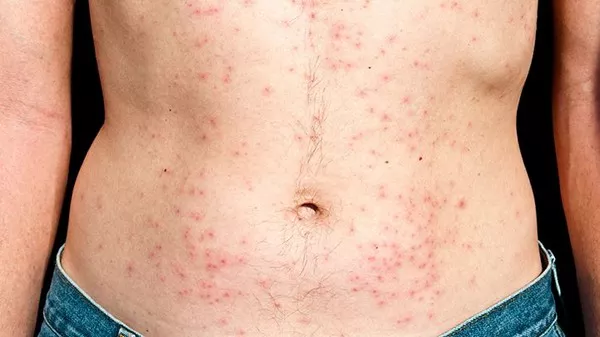Hives, medically known as urticaria, are a common skin condition characterized by raised, red, and itchy welts. These welts can vary in size and shape and may appear anywhere on the body. While hives often resolve on their own within a few hours to a few days, they can be incredibly uncomfortable and, in some cases, indicate an underlying health issue. As such, individuals suffering from hives may wonder if there is a shot or injection that can provide relief from this bothersome condition.
In this comprehensive analysis, we will delve into the various treatment options available for hives, including the use of injections, and explore their efficacy, safety, and considerations for use.
Understanding Hives: Causes and Symptoms
Before delving into treatment options, it is essential to understand the underlying causes and symptoms of hives. Hives occur when certain cells in the skin release histamine and other chemicals into the bloodstream, leading to the characteristic welts and itching associated with the condition.
Hives can be triggered by a variety of factors, including:
1. Allergens: Common allergens such as certain foods, medications, insect stings, or pet dander can trigger hives in susceptible individuals.
2. Environmental Factors: Exposure to extreme temperatures, sunlight, or water can sometimes cause hives, a condition known as physical urticaria.
3. Infections: Viral or bacterial infections can occasionally lead to the development of hives.
4. Stress: Emotional stress or anxiety can exacerbate hives or even trigger their onset.
5. Underlying Health Conditions: In some cases, hives may be a symptom of an underlying health issue, such as thyroid disease or autoimmune disorders.
The symptoms of hives typically include raised, red welts that may be accompanied by itching, swelling, or a burning sensation. In severe cases, hives can cause swelling of the lips, tongue, or throat, leading to difficulty breathing—an emergency situation known as anaphylaxis.
Treatment Options for Hives
Treatment for hives aims to alleviate symptoms, reduce the frequency and severity of outbreaks, and address any underlying causes or contributing factors. Depending on the individual’s symptoms and the suspected triggers, treatment may involve a combination of lifestyle modifications, over-the-counter medications, prescription drugs, and, in some cases, injections.
1. Antihistamines: Antihistamines are the primary treatment for hives and work by blocking the effects of histamine, thereby reducing itching and inflammation. Over-the-counter antihistamines such as cetirizine (Zyrtec), loratadine (Claritin), and fexofenadine (Allegra) are often effective for mild to moderate cases of hives. In severe cases, prescription-strength antihistamines or a combination of different types of antihistamines may be necessary.
2. Corticosteroids: Corticosteroids, either in oral or topical form, may be prescribed for short-term use to reduce inflammation and itching associated with hives. However, long-term use of oral corticosteroids is generally not recommended due to the risk of adverse effects.
3. Epinephrine: For individuals experiencing anaphylaxis or severe allergic reactions that involve hives, epinephrine injection kits, such as EpiPen, may be prescribed for immediate use in emergency situations. Epinephrine works by constricting blood vessels and opening airways, helping to reverse the symptoms of anaphylaxis.
4. Immunomodulators: In cases where hives are chronic and unresponsive to other treatments, immunomodulating medications such as omalizumab (Xolair) may be considered. Omalizumab works by inhibiting the body’s immune response and has been shown to be effective in reducing the frequency and severity of hives in some patients.
5. Biologic Therapies: Recent advances in biologic therapies have shown promise in the treatment of chronic hives. Biologics target specific pathways involved in the development of hives, offering a more targeted approach to treatment with potentially fewer side effects.
The Role of Injections in Hives Treatment
While injections play a crucial role in the treatment of severe allergic reactions and anaphylaxis, their use in the management of hives is more limited. Epinephrine injections are reserved for emergency situations where there is a risk of life-threatening complications, such as difficulty breathing or a drop in blood pressure.
In recent years, there has been growing interest in the use of immunomodulating injections, such as omalizumab, for the treatment of chronic hives that are resistant to conventional therapies. Omalizumab is a monoclonal antibody that targets immunoglobulin E (IgE), a key mediator of allergic reactions. By binding to IgE and preventing it from triggering the release of histamine and other inflammatory substances, omalizumab can help reduce the frequency and severity of hives in some patients.
Clinical studies have demonstrated the efficacy of omalizumab in reducing hives symptoms and improving quality of life in patients with chronic spontaneous urticaria, a form of hives that occurs without a known trigger. However, not all patients may respond to omalizumab treatment, and its high cost may limit its accessibility for some individuals.
Considerations and Conclusion
While injections such as omalizumab hold promise as a treatment option for chronic hives, it is essential to weigh the potential benefits against the risks and costs associated with these therapies. Additionally, individual response to treatment may vary, and healthcare providers should carefully evaluate each patient’s unique circumstances before recommending a specific course of action.
Conclusion
In conclusion, while there is no single “shot” for hives that offers a universal cure, there are various treatment options available to help alleviate symptoms and improve quality of life for individuals suffering from this condition. From antihistamines and corticosteroids to immunomodulating injections, the key to effective management lies in a personalized approach that addresses the underlying causes and tailors treatment to the individual patient’s needs. By working closely with healthcare providers and exploring the full range of treatment options, individuals with hives can find relief and regain control over their skin health.

























